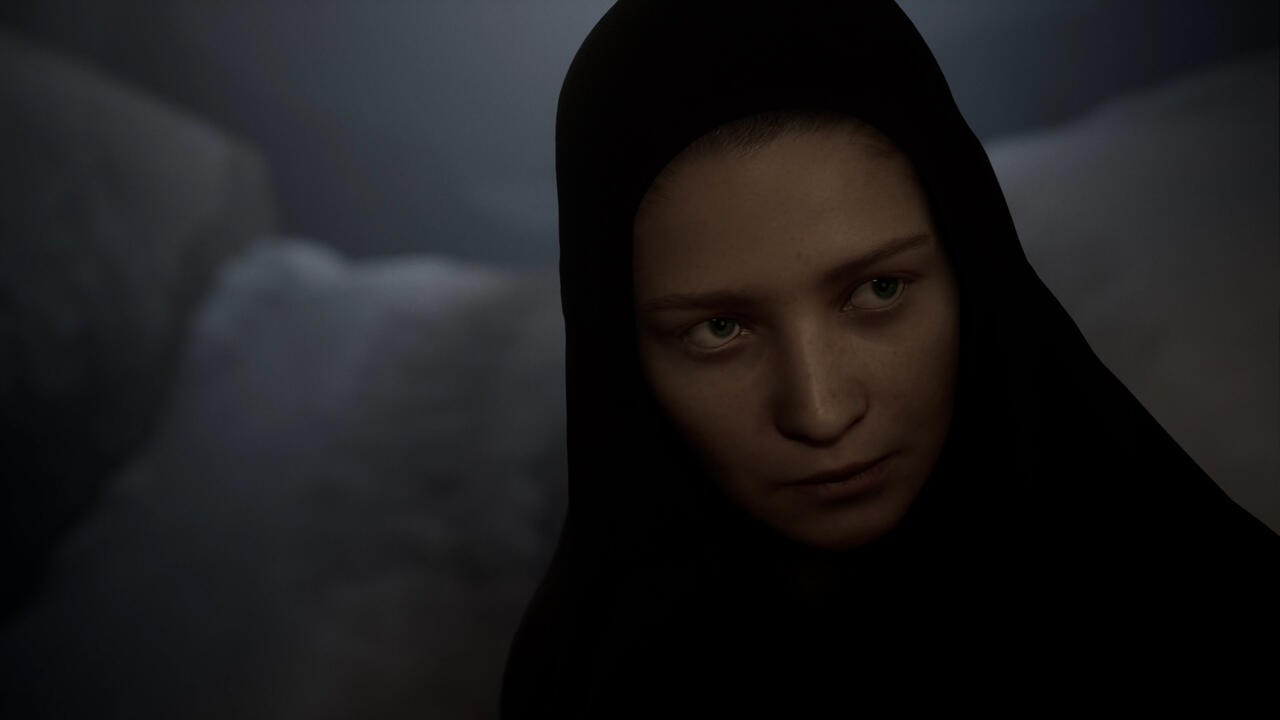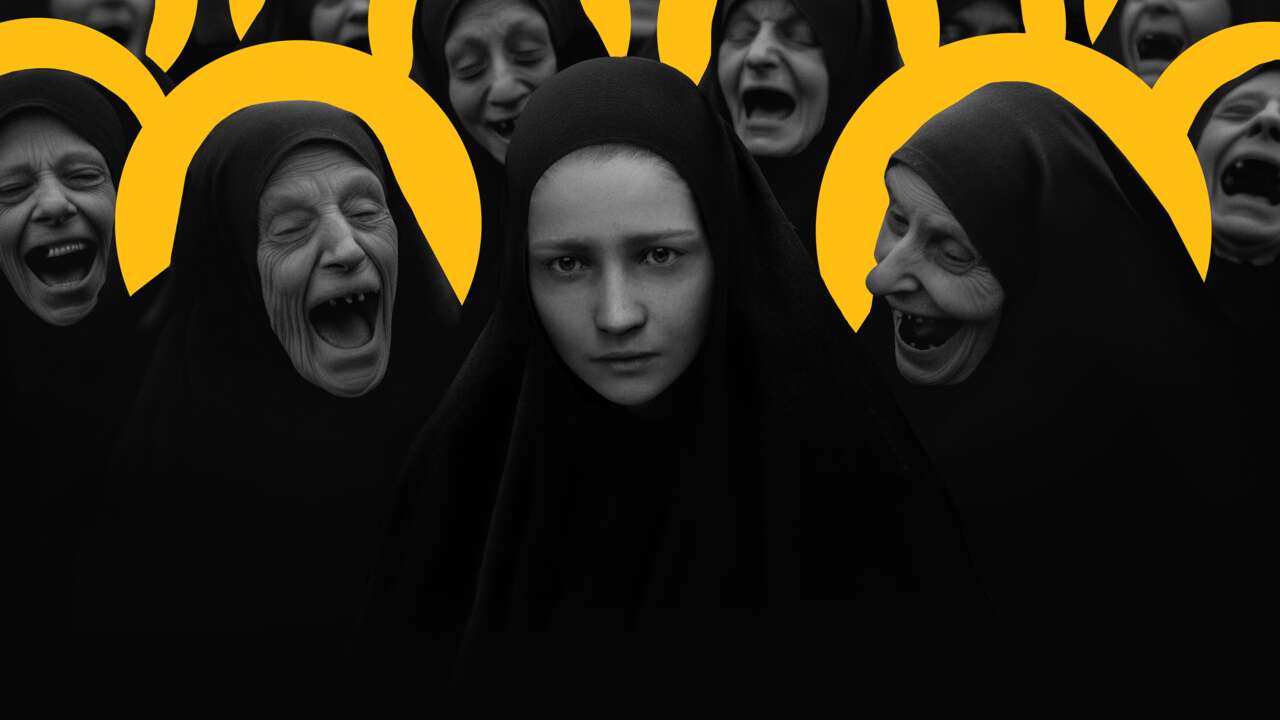Indika is a hard game to define. It looks like a horror game, but it’s not scary–at least not in the conventional sense. It plays like a third-person puzzle game, but most of the puzzles don’t require much thought. What Indika definitely is, however, is a fascinating psychological examination of faith and doubt that’s supported by remarkable visuals and mature writing. Occasionally, its ambitions get a little unwieldy, but developer Odd Meter’s decision to take on these heady themes and confidently explore nearly all of them is an impressive feat.
You play as Indika, a nun tormented by a demonic voice in her head, as she travels across a nightmarish interpretation of 19th-century Russia to deliver a letter. Most of the game consists of traveling from point A to B, solving a few puzzles, and watching cutscenes, but within these tasks are moments of introspection and self-discovery. Along the way, she meets an escaped convict named Ilya who claims God speaks to him. What ensues is a nuanced exploration of faith and doubt, love and hate, and pleasure and suffering. Both characters believe in the same God; rather than pitting a believer against a nonbeliever, Indika explores the space that exists between two interpretations of the same faith. This specificity allows Odd Meter to delve into different shades of Christianity and examine how the same texts, rituals, and prayers can be bent to ascertain different meanings.
Gallery
These frequent philosophical exchanges could have easily come off as overwrought or self-indulgent, but all these musings are in service of the characters and their development over the course of the story. For example, Indika tells Ilya she joined the convent of her own volition, but because her decision was fueled by emotions and experiences that were out of her control, can she really say she became a nun through her own free will? Ilya challenges this notion, and declares that free will is how we rise above our biological dispositions. Reflective conversations like these are key to Indika’s character as she grapples with her faith and attempts to make sense of her life.
It helps that Indika is portrayed by the fantastic Isabella Inchbald, and Louis Boyer embodies Ilya with equal confidence. There’s a raw authenticity and conviction to their performances that bring both characters to life. You can hear the fear and doubt in Indika’s voice and the desperation and hope in Ilya’s. Meanwhile, Silas Carson’s portrayal of the devil is humorous, sadistic, and cordial in his demeanor as he deftly narrates the action. While the writing and acting are great, they are occasionally undermined by awkward animations. Sometimes the action will look a bit too robotic, or dialogue won’t quite sync up with a character’s mouth. These are minor issues overall, but sometimes it was just enough to take me out of a scene.
Nevertheless, Indika is one of the most visually arresting games I’ve ever played. Developer Odd Meter uses framing, color, and lighting to achieve a look and feel that is rarely seen in games. Wide-angle shots often distort Indika’s facial features and warp the background to give the experience a voyeuristic feel. The framing, meanwhile, consistently impresses as it accentuates the action and world. In one section, after being chased by a wolf the size of a truck, the beast takes a tumble and wedges itself in a water wheel. What follows is a subdued conversation between Indika, Ilya, and the devil in her head about whether or not a beast can be sinful, as the camera tracks the dead wolf being dragged underwater by the water wheel. It’s a macabre scene given the context alone, but the stylistic choices allow the tone to meet the moment more effectively than a standard shot/reverse shot conversation would.
Rather than pitting a believer against a nonbeliever, Indika explores the space that exists between two interpretations of the same faith.
These choices aren’t just for show, either. They are bold and sometimes jarring creative decisions that reflect Indika’s inner turmoil as she travels across Russia. There are sections where the world–at least from Indika’s perspective–is split in two. When this happens, an oppressive and discordant synth kicks in as hellish red light soaks the scene. Through prayer, Indika can reforge the world around her and suppress the chaos. To progress, you–and by extension, Indika–must rip apart and merge her world by alternating between Indika’s cacophonous hell and her quiet reality. Although rare, these moments give weight and meaning to Indika’s gameplay as they leverage Indika’s themes of faith and doubt.
The same can’t always be said for the game’s puzzles, though. Most are simple and mundane: Move some boxes around, manipulate a crane, and strategically align lifts and elevators. Puzzles like these make sense in the early hours, as the game familiarizes you with Indika and her menial life. But as her world expands, these bland puzzles start to feel tonally and narratively incongruous as Indika struggles with her faith, especially when some puzzles literally let you tear the world apart, while others have you shove a box around.
With these criticisms in mind, it may seem like this story would be better told as a film or book. What’s fascinating, though, is that Indika clearly understands the medium it inhabits. It brazenly leverages video game tropes to elevate its themes. You’ll earn points for acts of faith, such as performing the sign of the cross at crucial moments, lighting altars, and collecting religious texts. You can then use these points to unlock skills that increase the amount of points Indika can earn. The thing is, these points do nothing. The loading screens even tell you they are useless. They have no discernible value and are simply a shallow way to measure Indika’s faith.
Yet, I didn’t want to miss any of it. I lit every altar, collected every text, and mashed the sign-of-the-cross button (yes, there’s a button) at every opportunity. It’s almost silly to gamify this stuff, but putting Indika through the motions as she builds up an arbitrary “faith” score while she’s actively questioning her faith is brilliant. I grew up religious. I went to church every Sunday and attended Catholic school. There was a distinct period in my life when I was questioning my beliefs, yet I still held on to some of those ingrained rituals. There was a quiet guilt that I couldn’t expunge: a feeling that could only be alleviated by going through the motions. In a way, it feels like Indika is using the language of video games and my understanding of them to reinforce her feelings of faith and doubt. Indika is about the internal struggle of a nun who isn’t entirely sure what she believes anymore, but seeing her cling to tradition–through my actions–is powerful.

Gallery
Although Indika does an excellent job exploring its themes of faith and doubt, there’s one subject the game doesn’t handle with the care it requires. In one particular scene near the end of the game, it touches on some uncomfortable territory that–depending on your interpretation of the story and its themes–might feel unnecessary. Up until that point, the evil that exists in the world feels intangible and theoretical. Indika and Ilya talk of hell and demons, but it always feels distant, almost as if God is protecting Indika on her journey. That is, until the final moments of the game, which allude to a sexual assault. The reasoning behind this scene is to test Indika’s faith, but as it stands, the scene in question feels like a means to an end rather than something Odd Meter wanted to properly explore.
Given the Catholic Church’s long and pockmarked history of sexual abuse, it makes sense that it plays such a critical role in Indika, but it’s not examined with the care that is necessary. The scene and what follows are clearly intended to elicit a lot of different emotions and speculation, but when those knee-jerk reactions stem from something so traumatic, it feels unearned. It’s almost as if the game wants you to move on as quickly as it does, which stands out as unusual in a game that is otherwise very thorough in its interrogation of sensitive subject matter. To be clear, Odd Meter doesn’t botch this scene entirely. Atrocity is often the most difficult test of faith, and they had the good sense not to show the assault itself. However, once the scene ends, it feels like Indika is barrelling towards its conclusion, while I was still trying to make sense of what just happened.
I’m often frustrated when developers lean on religious iconography but fail to explore faith in a meaningful way. Some of the greatest works of art exist because of religion, either as an exploration of it, a testament to it, or a denouncement of it. Human history is inextricably tied to religious faith. Yet, outside of a few exceptions, games tend to avoid commenting on religion without obfuscating it behind fake dogmas and fantastical gods. Indika’s direct examination of Christianity allows it to better explore the gray areas of religion and faith that are often lost when the recognizable specifics are swapped with allegorical fiction. And while the execution occasionally falters, its willingness to grapple with these difficult themes, and the conclusions it draws, make Indika a fascinating journey.
